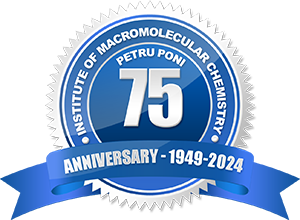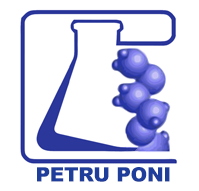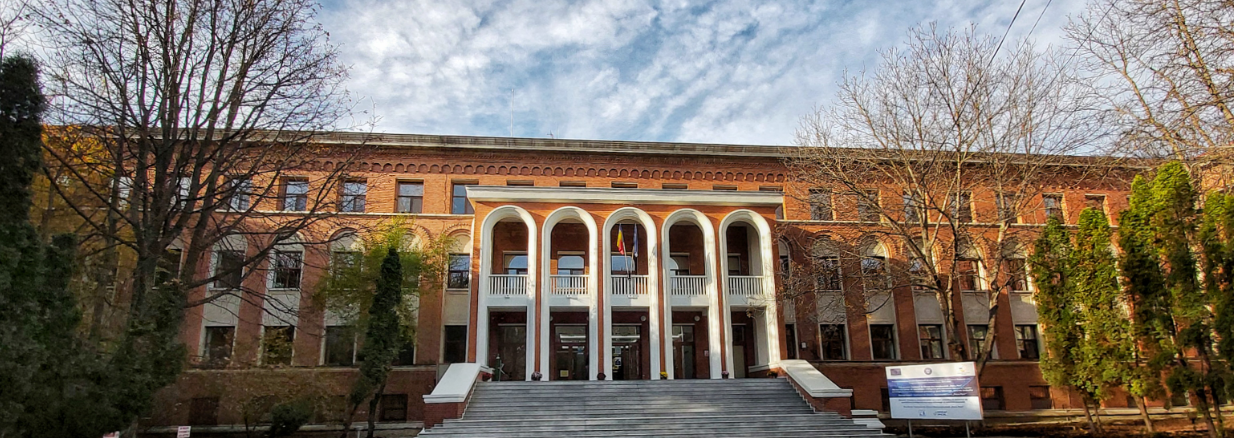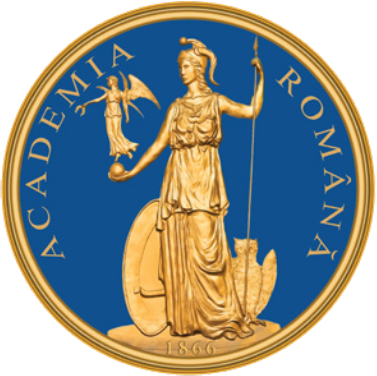2021: In the first stage of the project "Synthesis and characterization of polyelectrolytes based on polysaccharides with different chain flexibility (Pul, Chit, Dex, Cel) in soluble or hydrogel form and studies of aggregation/adsorption of inorganic and organic particles in aqueous and non-aqueous dispersion medium” were addressed several strategies for the synthesis of ionic, soluble and crosslinked polymers (hydrogels), based on polysaccharides, able of interacting with inorganic and organic particles, dispersed in model suspensions/emulsions. In order to achieve the objectives of this stage, the following activities were carried out: 1.1. Synthesis and characterization of the chemical composition of soluble PEs (polysaccharides with cationic grafts); 1.2. Preparation and physico-chemical characterization of hydrogels in the form of monolith and/or membranes based on Chit, Pul, DxS by cryogelification technique; 1.3. aggregation of inorganic particles (zirconium silicate, clays, etc.) in aqueous/non-aqueous dispersion medium; 1.4. Adsorption of one-component pesticides by hydrogels by the freezing technique, the results of which are presented as follows:
- Samples of soluble cationic polysaccharides based on pullulan with tertiary or quaternary ammonium amine groups with or without hydrophobic groups were synthesized and characterized (elemental analysis, 1H- and 13C-NMR spectroscopy, IR). The synthesis conditions (molar ratio between reaction partners, temperature, duration) were adapted to each type of macromolecular compound so as to obtain polyelectrolytes with a well-defined structure;
- Samples containing tertiary amine groups or quaternary ammonium groups were selected for aggregation of inorganic particles (zirconium silicate (kreutzonite), clays, TiO2, etc.) in aqueous (different pHs) and aqueous/non-aqueous (water/methanol (%): 90/10 and 50/50) dispersion medium;
- All investigated inorganic particles were successfully aggregated and removed (more than 95%) by Pg-pAPTAC2 and DMAPA0.16-P polymers from dispersions prepared with water regardless of the pH or water / methanol composition (%, v / v): 90/10 and 50/50; optimal polymer doses ranged from 0.4 mg L-1 to 1.4 mg L-1.
Novel porous hydrogels were prepared by cryogelation technique and characterized (FT-IR, NMR, and SEM):
- Porous hydrogels based on Chit and oxidized CMC (CMCox), as membranes were prepared using different molar ratios between -NH2 groups of Chit and -CHO groups of CMCox.
- Physically cross-linked hydrogels based on Chit and DxS were designed by varying the molar ratio between -NH2 groups of Chit and -SO3Na groups of DxS, the molar mass of DxS, and the gel preparation temperature.
- Chit-based porous hydrogels, as monoliths were obtained by combining cryogelation with porogen leaching methodology. These hydrogels have been successfully used to remove Fastac 10 EC insecticide from aqueous solutions.
- Macroporous interpenetrating hydrogel networks based on PHEMA and Pul were also successfully synthesized.
Samples of cationic polymers based on polysaccharides, soluble or in gel form, synthesized and tested in the aggregation and sorption experiments in the first stage of the project proved to be highly effective in reducing (90-95%) the inorganic contaminants (kreutzonite, TiO2, kaolin) and organic (complex formulation of pyrethroid insecticide-Fastac 10 EC) investigated, thus expanding the range of biodegradable, non-toxic and cheap ionic materials with potential applications in the field of wastewater purification from the ceramic and pesticides industries as well as in agriculture.
2022: In the second stage of the project "Study of the interdependencies between PEs characteristics, dynamic properties and the ability of aggregation and adsorption of pesticide mixtures" both the physico-chemical properties of some polysaccharide-based ionic polymers (pullulan, dextran, chitosan), soluble and cross-linked (microspheres/cryogels) and the ability to remove pesticide mixtures from model dispersions have been investigated. To achieve the objectives of this stage, the following activities were carried out: 2.1. Viscosity studies of soluble cationic polymers PEs in aqueous solution both in the absence and presence of salt; 2.2. Preparation and physical-chemical characterization of microspheres based on Pul, Dex; 2.3. Aggregation and adsorption of pesticide mixtures in the presence of soluble cationic PEs in combination with a neutral polymer or not, and of hydrogels (microspheres and cryogels) whose results are presented, as follows:
- The viscosimetric behavior of solutions of cationic derivatives of pullulan (Pul), with pendant quaternary ammonium salt groups in aqueous solution, both in the absence and presence of low molecular salt, was investigated. The following hydrodynamic parameters were quantified from the viscometric measurements: the intrinsic viscosity ([η]), the hydrodynamic interaction parameter (B) and the characteristic specific hydrodynamic volume ([η]*), which provide information on both the conformation and the hydrodynamic volume of the polymer chains as well as about the competition between polymer-polymer and polymer-solvent interactions.
- The following types of microsferes have been synthesized and characterized (FT-IR, SEM, TG-DTG) următoarele tipuri de microsfere:
-
- Microspheres based on pullulan (Pul) by cross-linking in suspension of Pul with epichlorohydrin (EPCH). They were functionalized with cationic groups (tertiary amine) with a content of 1.2 mechiv./g.
- Microspheres based on dextran (Dex) by reticulation in suspension of Dex with EPCH and subsequently functionalized with 2.45 mechiv/g tertiary and quaternary ammonium amine groups.
- Samples of Pul-based cationic PEs of type P-g-pAPTAC and DMAPAx-P were selected for the aggregation of pesticide particles (complex commercial formulations) (Confidor Oil (CO), Confidor Energy (CE), Decis (Dc), Karate Zeon (KZ), Fastac 10EC (F)) in order to remove them from mono -/ two components model emulsions.
- All investigated insecticide particles were successfully removed (removal efficiency between 84-90%) in the presence of P-g-pAPTAC and DMAPA0.7-P samples, the optimal polymer doses varying in the range of 0.6 mg L-1 – 2.2 mg L-1.
- Crogels based on chitosan (Chit) and carboxymethyl cellulose (CMC) or oxidized carboxymethyl cellulose (CMCox) have been used to remove multicomponent fungicide formulations, namely Dithan (Dt), Melody Compact (MC), Curzate Manox ( CM) and Cabrio Top (CT). These sorbents removed the MC fungicide most effectively. The maximum theoretical adsorption capacities of Chit/CMC and Chit/CMCox3 sorbents for this fungicide were 62.74 mg/g and 146.68 mg/g, respectively.
- Microspheres based on Pul (Pul/DMA) and Dex (Dex/DEA) have been shown to be good sorbents for Melody Compact (MC) particles. The removal process of the fungicide formulation is an effective and complex one, with removal efficiencies between 89.5-95% being recorded by adsorption on the surface of the microspheres followed by flocculation of the MC molecules. The optimal doses of microspheres were 5 mg Pul/DMA and 2.5 mg Dex/DEA, the differences being due to the lower content of cationic groups in Pul microspheres.
Soluble cationic derivatives of Pul and polymer samples in the form of cryogels/microspheres, synthesized in steps 1 (soluble polymers and cryogels) and 2 (microspheres based on Pul and Dex) proved to be effective flocculants and adsorbents for the mixtures of investigated pesticides (removal efficiency 84-95%), a fact that recommends them for potential uses in the field of wastewater containing such highly toxic contaminants.
2023: To solve the objective 3 a part of the synthesized polysaccharide derivatives, soluble or in hydrogel form, have been tested as flocculants/sorbents in mono- or multicomponents aqueous dispersions, which contained polutants of inorganic (kaolin, kreutzonit (zirconium silicate), titanium dioxide (TiO2)) and organic type (pesticides: Confidor Oil (CO)), Confidor Energy (CE), Decis (Dc), Karate Zeon (KZ), Fastac 10EC (F), Dithane M45 (Dt), Melody Compact (MC), Cabrio Top (CT), Bordeaux mixture (BM)). The investigations focused on the impact of some characteristic parameters of the macromolecular compounds (chemical structure, content in ionic groups, type of charge, degree of crosslinking, nature of crosslinker, porosity, concentration), contaminants (nature, size, concentration), and environment (pH, polarity, salinity) on the efficiency of the polymer samples to aggregate/adsorb and, thus, remove the investigated contaminants from synthetic dispersions.
The analysis of the obtained results led to the following conclusions:
(i) the investigated inorganic particles were successfully aggregated and removed (RE > 90%) by the P-g-pAPTAC2 and DMAPA0.16-P polymers from dispersions prepared in water regardless of the pH value or the composition of the water/methanol mixture (%, v/ v): 90/10 and 50/50; the optimum polymer doses varied in the range 0.4 mg L-1 - 5 mg L-1;
(ii) the pullulan derivatives P-g-pAPTAC3 și DMAPA0.7-P showed the best efficiency (RE: 83-90%) in removal of insecticides CO, CE, F, KZ at optimum doses between 0.6 - 2 mg L-1 from mono or bicomponent dispersions, while the polymers TMAP0.4-P and TMAP0.7-P proved to have the best performance for removal of fungicides BM, MC (TMAP0.4-P – RE: 89-94%) and Dt (TMAP0.7-P – RE: 78-86%) from dispersions prepared in water and salts with or without kaolin: optimum doses between 4 and 26 mg L-1;
(iii) cryogels based on CS crosslinked with glutaraldehyde (GA) in a ratio of 2.5 wt.% were found to be the most suitable for effective removal of insecticide F (RE: 90.2%; sorbent dose = 250 mg); cryogels based on CS crosslinked with GA in a ratio of 5 wt.% showed very good removal efficiency of MC fungicide in the presence of NaCl (RE: 100%; sorbent dose = 250 mg). The same fungicide was also removed very well when matrices based on CS/CMC, CS/ oxidized CMC or interpenetrated networks based on PHEMA/DMAPA-Pul were used (RE: 88-91%; sorbent doses =50, 100 mg). Cryogels based on CS and oxidized CMC (sample CS/DA-CMC2.2) were also effective in removing CT and CM pesticides (RE: 71.67 and 86.64%, respectively; sorbent dose = 250 mg);
(iv) microspheres based on Pul and Dex functionalized with tertiary amino and/or quaternary ammonium groups showed the highest retention capacities for the MC and CT fungicides (1.44 and 1.56 g MC/ g ms; 0.46 g CT/ g ms) as well as small amounts of sorbent required for their removal (2.5 mg Pul-DMA ms and 5 mg Dex-DEA ms)/MC; 5 mg Dex-DEA ms/CT).
The scientific results of these studies recommend testing the soluble and crosslinked ionic polymers (PE) (hydrogels) synthesized within the present project as flocculants/adsorbents for the investigated contaminants also present in the real wastewater.
IMPACT
The objectives proposed and solved within the project contribute from scientific point of view to the enrichment of knowledge in the field of polyelectrolytes by:
(i) the synthesis and characterization of new ionic polymers with a well-defined structure, based on renewable and ecological sources (polysaccharides), namely: 1. soluble polymers based on pullulan with tertiary amino or quaternary ammonium groups with or without hydrophobic groups; 2. hydrogels in the form of monoliths and/or membranes, as well as microspheres with adjustable morphology through cryogelation and suspension crosslinking techniques;
(ii) establishing clear relationships between the chemical structures of the synthesized ionic polymers and physico-chemical properties (viscosity, conductivity, crosslinking degree, pore size, etc.) sustained from experimentally and theoretically point of view by credible models (Fedors/Rao, Wolf, Oosawa, Manning) to facilitate the control of material properties for new applications, including those for wastewater purification;
(iii) testing, for the first time, of synthesized polysaccharide derivatives as flocculants/sorbents in mono- or multi-component aqueous dispersions, which contained inorganic (kaolin, oxides) and organic (pesticide formulations) pollutants. The investigations focused on the impact of a large number of parameters characteristic of macromolecular compounds (chemical structure, ionic group content, charge type, degree of crosslinking, crosslinker nature, porosity, concentration), contaminants (nature, size, concentration), and the environment (pH, polarity, salinity) on the efficiency of the polymer samples to aggregate/adsorb and remove the investigated contaminants from synthetic dispersions. At the end of these studies, the most efficient polymers (in terms of optimum polymer dose or removal efficiency) were selected as flocculants/adsorbents for the investigated contaminants from synthetic wastewater.
Relevant results (i) have been published in ISI journals (13 articles of which 11 with high impact factor (>4), 1 under review at the React. Func. Polym. journal (Ms: React-D-23-00744R1) and 1 article in journal without impact factor) and presented at international scientific meetings (16); (ii) they contributed to the specialization of the PhD student Maria-Magdalena Năfureanu, whose doctoral thesis "Ionic polymers. Behavior in aqueous solutions and dispersions" completely falls within the theme of the project; this demarche responds to the national policy of increasing the number of well trained young researchers.
Within the project, several types of ionic polymers were proposed and synthesized their chemical structure and physico-chemical properties allowing their use as flocculants/adsorbents for a wide range of inorganic and organic contaminants. Although the research performed to solve the objectives of this project has a fundamental character, both the information obtained and the polymers selected as the most efficient flocculants/adsorbents for the investigated contaminants can lead to the formation of a database necessary for the clarification of several problems regarding the practical use of the new types of biodegradable, non-toxic and cheap ionic materials in the field of real wastewater purification in order to reuse them and, thus, meet the increasingly strict requirements of the standards imposed in terms of quality, reliability, economy and durability. |








